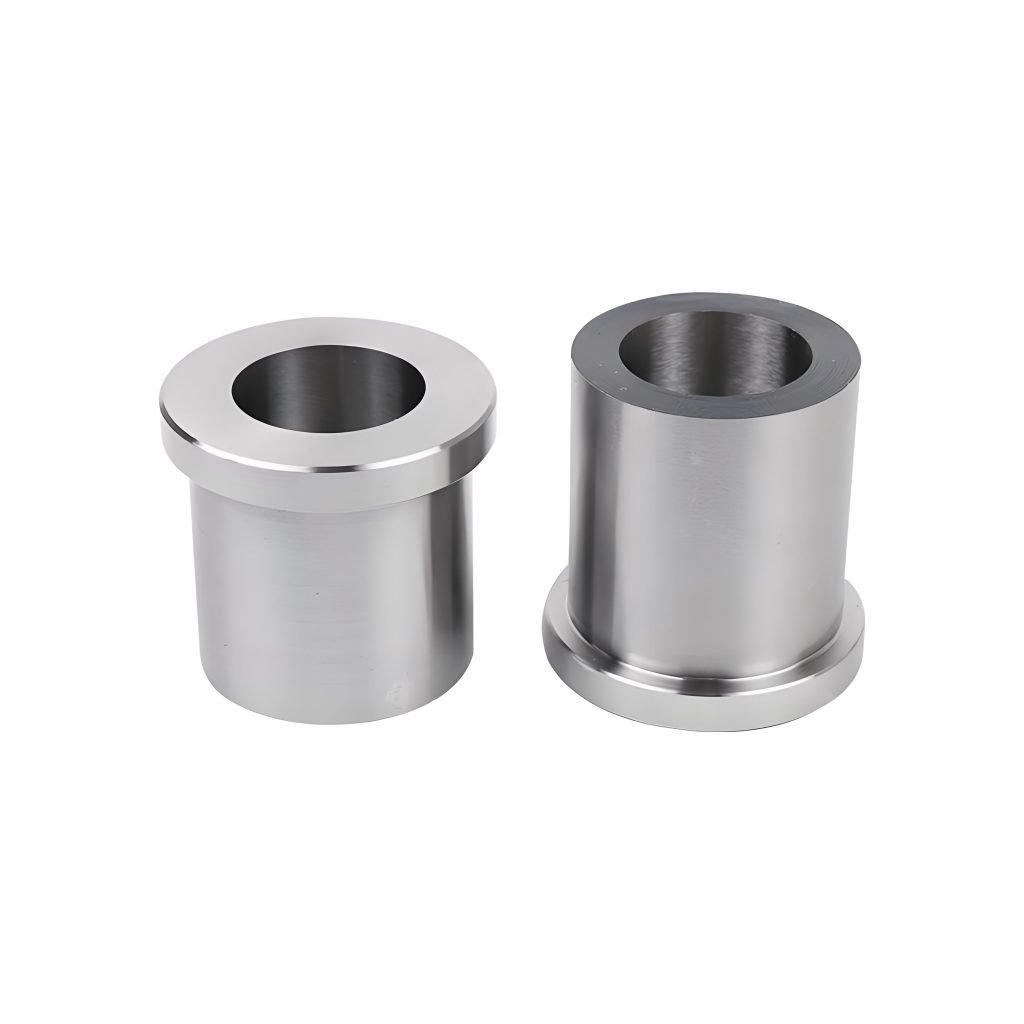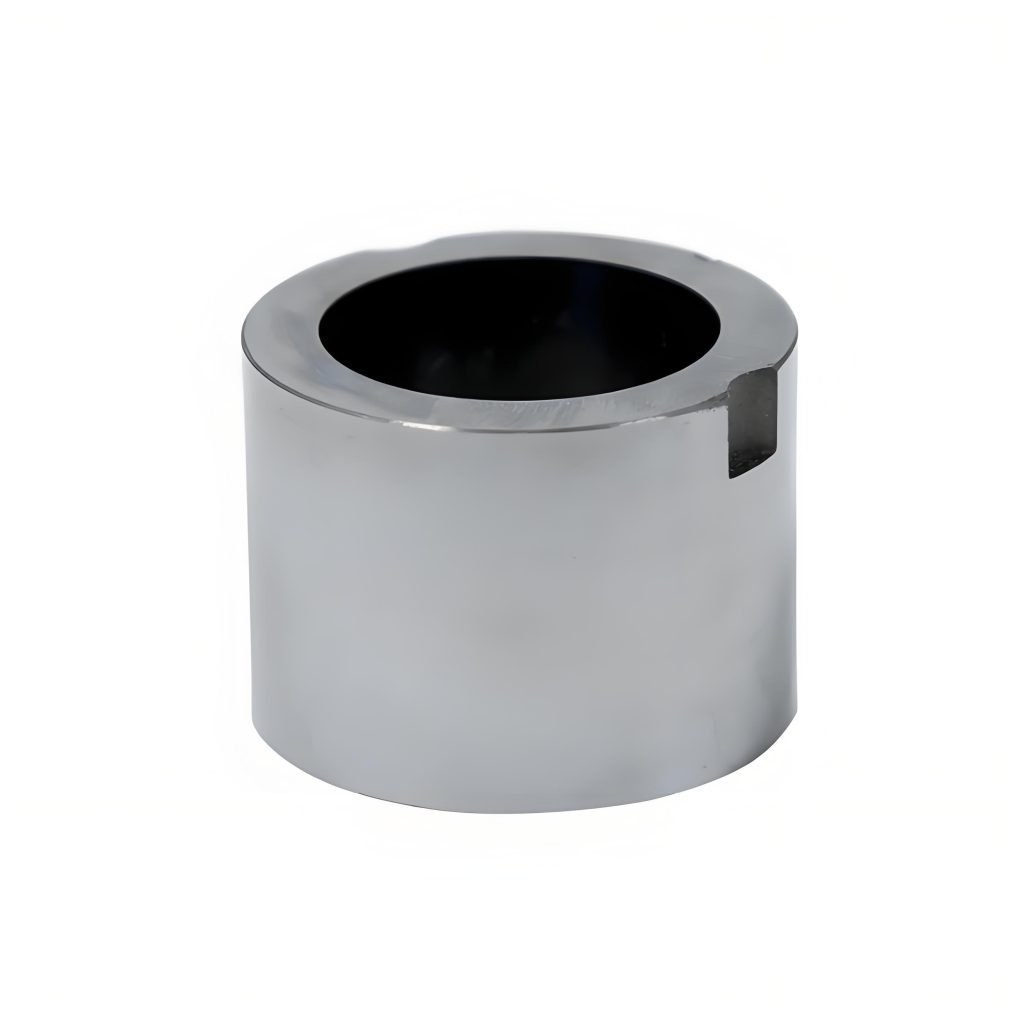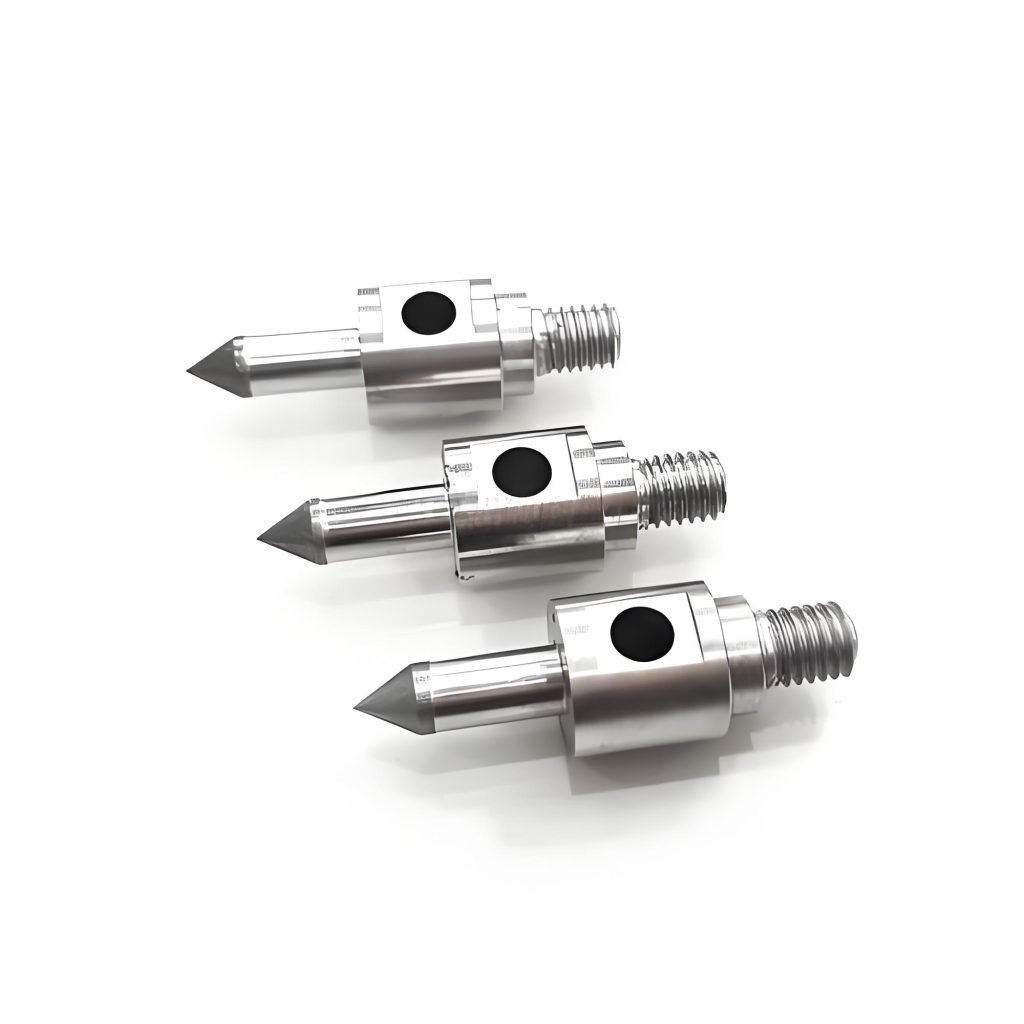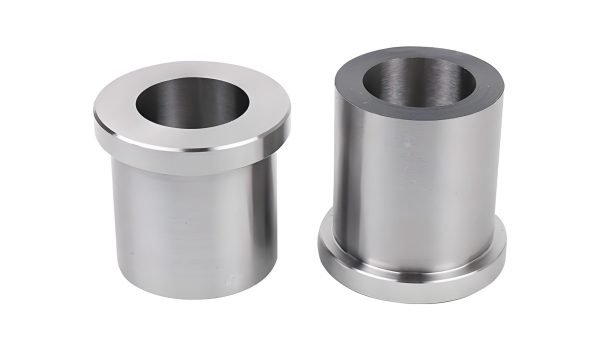Sprue bushing injection molding is a crucial part of plastic manufacturing. These components prevent material from leaking during production. Manufacturers make them from hardened steel to ensure mold cavities fill evenly and control the flow rate and pressure of the molten plastic.
Manufacturers have to choose between hot and cold sprues as this decision affects production efficiency and part quality. Hot sprues are in contact with the molten plastic throughout the process and give faster cycle times. Cold sprues are a budget friendly option but may have some consistency issues. Sprue bushings usually have a spherical radius of .50″ or .75″. Design and maintenance of the sprue bushing needs to be taken care of to avoid problems like rust and scratches that can block plastic flow.
This article covers everything that manufacturers should know about sprue bushings. You will learn about their core functions and advanced design elements that improve injection molding results.

What is Sprue Bushing in Injection Molding
Sprue bushings are at the heart of injection molding systems. These specialized channels control the movement of material into the mold cavity. The hardened-steel components guide plastic through the first stage of the injection molding process.
Simple definition and role in the process
Sprue bushings serve as the link between the injection molding machine and the mold. Melted plastic flows into the mold through this cylindrical component’s opening. The plastic material moves from the sprue bushing through runners and gates before reaching the mold cavity. Sometimes it flows straight into the cavity without any channels between.
Sprue bushings do more than just provide an entry point. These components serve several key roles:
- Stop plastic material from leaking during injection
- Control flow distribution to keep molten material even
- Reduce shear stress on material entering the mold
- Protect expensive mold parts from harsh injection conditions
A central hole runs through the sprue bushing. The injection nozzle uses this hole to deliver molten plastic under pressure. The bushing sits at the mold’s center and connects the molding machine to the mold assembly first.
Material flow matters
Material flow through the sprue bushing affects production quality and cost. A well designed bushing helps mold cavities fill completely and evenly. It controls the flow rate and pressure of the molten plastic to prevent air pockets and partial filling.Designers have to consider many factors when designing sprue bushings. The mold’s sprue bushing should have a spherical radius 1-2 mm larger than the machine nozzle’s radius. This ensures proper sealing and flow. The entrance diameter (D) should be 0.5mm larger than the machine nozzle’s diameter.
The sprue’s dimensions, cross-section and pressure drop characteristics affect how material flows and fills cavities. The sprue also helps cool material during solidification. This reduces defects.
Manufacturers can speed up cycle times by using copper alloy bushings instead of steel ones. This material change increases heat transfer rates. These rates depend on the distance between hot and cold areas in the mold.

Types of Sprue Bushings
Manufacturers use sprue bushings of all types to meet their injection molding needs. Each design plays a unique role in the molding process.
Standard Sprue Bushing
Standard sprue bushings are available in A, B and U series, each with different specifications. The B series is most popular as it is compatible with injection clamp plates and locating rings. Standard bushings have stem diameters like 1-inch for B series and 3/4-inch for U series.
These bushings are versatile and can be used with various injection molding machines without any mold modifications.
Tapered Sprue Bushing
Tapered bushings affect flow characteristics and weight. A standard taper angle is 2.39° included but smaller angles like 1.5° or even 0.5° per side can be used for specialized applications.
Reducing the taper angle in a 6-inch sprue with a 5/32-inch orifice can reduce the parting line diameter by 23% and the cross-sectional area by 41%, resulting in 32% reduction in sprue weight. This reduces material waste and improves cycle time.

Locating Ring with Sprue
Locating rings and sprue bushings work in tandem to align the sprue orifice precisely with the machine’s stationary platen. You will find several types:
- Standard type: This ring positions the mold to the platen but only extends 5/16 inch beyond the clamp plate face
- Tapered type: These rings have lead-in designs that make mold setup easier* Clamp type: This version has a stepped-down interior diameter (13/4 inches) that holds the sprue bushing and stops “blowing back”
Hot Sprue Bushing vs. Cold Sprue Bushing: Key differences
Hot and cold sprue bushings handle molten plastic differently:
- Cold sprue bushings create an unheated channel between the machine nozzle and mold cavity. These bushings create a sprue that must be removed during subsequent processing steps.
- Hot sprue bushings use heating elements to keep resin temperature steady within the channel. They reduce cycle time, regrind, sink marks and need less gate area trimming. Hot bushings cost more upfront but are budget friendly for high volume production runs.
Design Considerations for Sprue Bushings
Engineers need to design sprue bushings with precision to get the best results in injection molding. The design process needs to consider several technical factors to ensure consistent material flow and quality parts.
Dimensions and angles
The way sprue bushings are sized affects molding performance. The bushing’s spherical radius should be 1-2 mm bigger than the machine nozzle radius to ensure proper sealing. The entrance diameter should be 0.5mm bigger than the machine nozzle diameter to get the best flow.
Taper angles affect material flow a lot. Standard bushings have 2° to 3° taper on each side (about 4-6° total angle). Some special cases might need gentler tapers of 1.5° or 0.5° per side. These smaller tapers can reduce sprue weight by up to 32%, which reduces cycle time and waste.
Heat resistance and pressure tolerance
Sprue bushings need to withstand extreme conditions during injection. Standard bushings work well between 80C and 350°C. Special high-temperature applications might need bushings that can handle 400°C or more.
These components must also withstand injection pressures from 10,000 to 30,000 psi without warping. The bushing’s size needs to stay stable across all operating temperatures.
Material selection (e.g., H13, stainless steel)
The material used to make sprue bushings is the foundation of their durability and performance:
- H13 tool steel: Most engineers choose this because it’s great at staying hard when hot, resisting wear and temperature changes. H13 keeps its shape well even with repeated heating and cooling.
- Stainless steel: This material is better at fighting corrosion which helps a lot when you’re working with corrosive resins that can damage regular tool steel.
- Beryllium copper alloys: These conduct heat up to 5 times better than steel which improves cooling and can help reduce cycle times.
Adding coatings like titanium nitride or chrome plating can improve wear resistance and make parts release easier. This helps bushings last longer and perform better in tough conditions.
How Sprue Bushings Affect Mold Performance
Quality and design of sprue bushings can make or break an injection molding system’s performance. These basic components affect production success through their direct impact on material flow, part quality and efficiency.
Flow control and cycle time
Sprue bushings control the flow rate and pressure of molten plastic. A well-designed bushing helps the mold cavities fill smoothly and evenly. This prevents problems like air pockets and partial filling. The way it manages pressure affects production speed and consistency.
Cooling efficiency has a major impact on performance. In a two-plate mold, the sprue typically makes up the largest part of the melt delivery system. This often controls the overall cycle time. You can boost thermal conductivity by switching standard steel bushings with copper alloy versions. Tests show that conformally cooled sprue bushings cut cooling time by up to 50%. Real production improvements usually average around 30%.
Impact on part quality and defects
Poor fitting or damaged sprue bushings create many quality issues:
- Leaks and material waste – Bad connections between nozzle tips and sprue bushings waste material and can damage equipment
- Splay or streaks – Small gaps pull air into the melt stream through a venturi effect
- Bubbles – Air gets trapped within parts, showing up clearly in transparent materials
- Uneven plastic flow – Parts become inconsistent with possible defects
Problems inside the bushing bore like rust, scratches, pitting or machining marks make sprues stick and disrupt production. Regular checks become crucial to maintain quality.
Maintenance and cleaning
Good maintenance starts with visual checks. Inspect the sprue bushing nozzle seat at the start of each setup. Look for rolled edges, dents, chips, cracks, burrs, residue buildup or plastic. “Sprue break” damages components over time as the carriage hits the bushing repeatedly. A 20-second cycle means the nozzle tip hits the bushing over 4,300 times each day.
Clean any plastic residue after use to avoid blockages. Hot tip sprue cleaners can safely melt away clogs without removing molds from presses. Use “soft” tools like brass rods or brass screws heated with propane to remove stuck sprues. This prevents internal scratches during maintenance.
How to Choose the Right Sprue Bushing
Choosing the right sprue bushing involves several factors that affect molding performance. The choice you make will improve production, part quality and your molding operation’s success.
Application specific selection
Understanding your application’s requirements is the first step in selection. DME offers various sprue bushing types including “A”, “B”, “U”, “UV”, “LN”, “AR”, “UR”, “L” series and Performance Sprue Bushings. Standard series bushings typically have a base hardness of 43 to 45 HRc. The “LN” series has a special surface treatment that boosts surface hardness to 60-62 HRc.
Material selection is part of the process:
- Standard steel bushings suit most applications
- Copper alloy performance bushings help transfer heat faster and reduce cycle times
- Hardened stainless steel inserts resist wear from abrasive materials
- Carbide-lined options work best with highly corrosive or abrasive resins
The orifice size (known as the “O” dimension) needs to be properly sized to prevent underfilling and pressure drops. A correctly calculated sprue-bushing orifice diameter should be: DFEED = 0.250 × 2^(1/3) = 0.315 in. for a primary runner of 0.250 in..
Compatibility with the molding system
Your machine nozzle’s specifications should match the sprue bushing’s spherical radius (usually .50” or .75”). Flat-type bushings can be used as alternatives to radius-type bushings.The sprue bushing must fit the mold base precisely. Mating diameters should have no more than 0.0004 inches clearance, since resins can flash past gaps of 0.0005 inches or larger. When you order a separate sprue bushing, check the fit carefully – many need secondary operations for proper installation.
Note that manufacturers ship sprue bushings slightly oversized compared to standard plate thicknesses. The front face usually needs grinding for proper fit. Here are key specifications to check when ordering:
- Shank length (measured from bushing head underside to end)
- Overall length (excluding nozzle measurements)
- Tip hole diameter at the nozzle seat
Your selection should balance material flow, cooling efficiency and your molding needs.
Conclusion: How to Improve Injection Molding with the Right Sprue Bushing
Sprue bushings may be small but they are crucial to injection molding. They control plastic flow, reduce cycle times and improve part quality. Hot or cold sprue bushings depend on your production requirements. Materials like H13 tool steel, stainless steel or copper alloys have different benefits. Regular cleaning and maintenance prevents leaks or poor flow. Before choosing a sprue bushing consider pressure, temperature and material compatibility. Trusted manufacturers like Fecision with over years of experience can help you choose the right one. With the right sprue bushing design and maintenance your injection molding process will be more efficient and reliable and produce better plastic parts.




